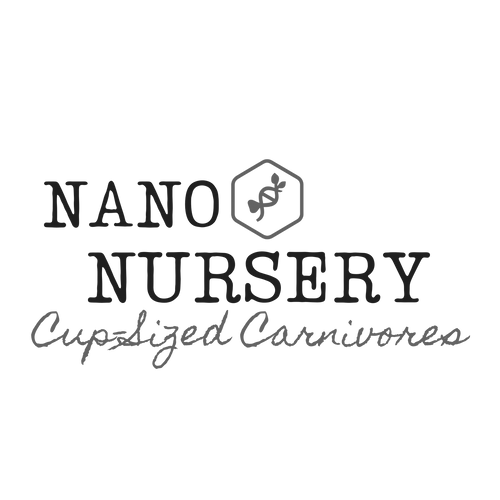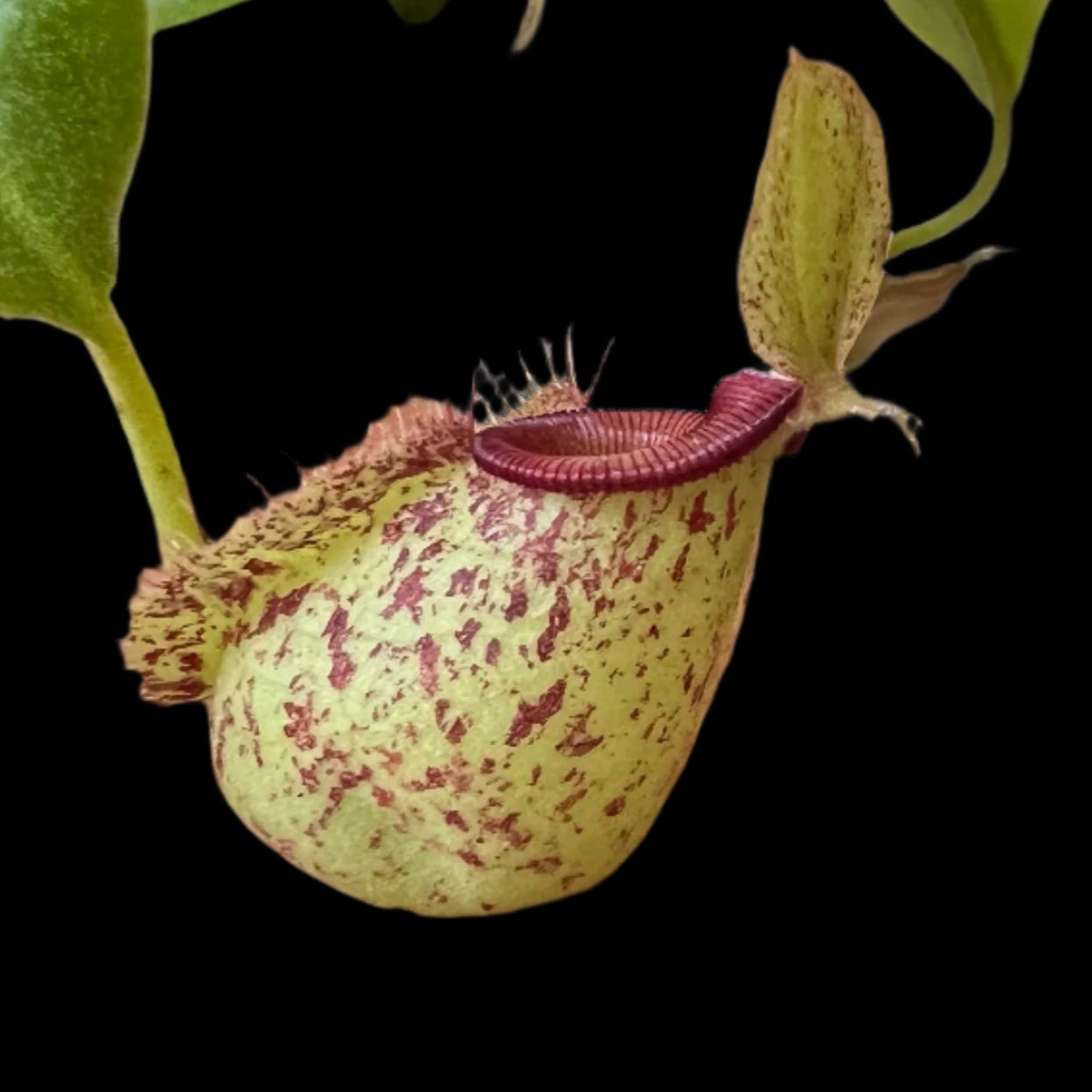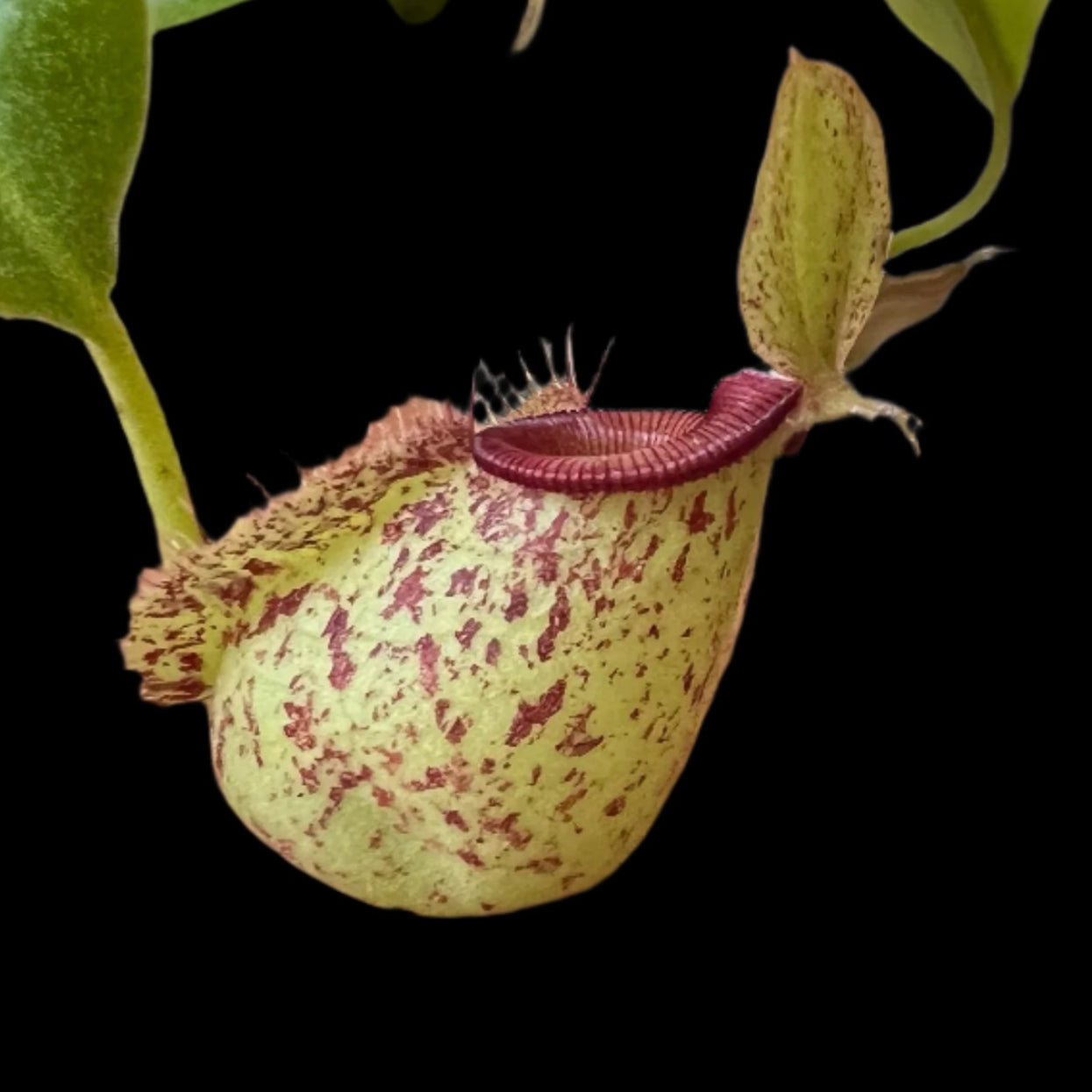SKU:NEPE-0018-S
Nepenthes Hookeriana (ampullaria x rafflesiana)
Nepenthes Hookeriana (ampullaria x rafflesiana)
Being a natural cross between Nepenthes rafflesiana and Nepenthes ampullaria. It is a striking lowland tropical pitcher plant with robust, ground-hugging rosettes and bold, tubby pitchers. The pitchers are typically green to pinkish-red, often mottled or streaked with maroon, and feature a wide, flared peristome that ranges from striped to deep red. The lids are broad and slightly heart-shaped, shading the fluid-filled traps below. Its foliage is lush and leathery, with a vibrant green hue and strong tendrils that support the heavy pitchers.
Country of Origin: Southeast Asia (notably Borneo, Sumatra, Malaysia, Indonesia, Philippines, Papua New Guinea)
Temperature: 24–32 °C
Care: Moderate (beginner-intermediate)
Light: Bright indirect light to partial sun
Humidity: Very high (70–90%)
Each transparent carnivorous cup (5 cm diameter x 7 cm height) contains a juvenile carnivorous plant freshly transitioned from tissue culture.
Inside, you'll find a young carnivorous plant planted securely in special growing media soil that replicates their natural habitat.
This carefully balanced environment maintains optimal humidity, aiding the delicate plants during their crucial hardening-off stage.
Perfect for both novice growers and experienced collectors, these cups provide a simple and effective way to cultivate and enjoy captivating insect-eating plants.
A tissue culture vessel is a sterile, transparent container (5 cm diameter x 7 cm height) that holds multiple young plants (typically 3 or more) grown under laboratory conditions.
These vessels provide a carefully controlled environment, keeping the plants healthy and contaminant-free until they're ready to transition to standard growing conditions.
Quick Hardening Steps:
- Open Lid Gradually: Slightly open the cup to slowly reduce humidity.
- Maintain Humidity: Gradually decrease humidity over 2–4 weeks.
- Indirect Light: Start with gentle, indirect lighting.
- Moist Soil: Keep media damp, never wet.
- Monitor Closely: Slowly increase airflow and light exposure.
Couldn't load pickup availability
Being a natural cross between Nepenthes rafflesiana and Nepenthes ampullaria. It is a striking lowland tropical pitcher plant with robust, ground-hugging rosettes and bold, tubby pitchers. The pitchers are typically green to pinkish-red, often mottled or streaked with maroon, and feature a wide, flared peristome that ranges from striped to deep red. The lids are broad and slightly heart-shaped, shading the fluid-filled traps below. Its foliage is lush and leathery, with a vibrant green hue and strong tendrils that support the heavy pitchers.
Country of Origin: Southeast Asia (notably Borneo, Sumatra, Malaysia, Indonesia, Philippines, Papua New Guinea)
Temperature: 24–32 °C
Care: Moderate (beginner-intermediate)
Light: Bright indirect light to partial sun
Humidity: Very high (70–90%)
Each transparent carnivorous cup (5 cm diameter x 7 cm height) contains a juvenile carnivorous plant freshly transitioned from tissue culture.
Inside, you'll find a young carnivorous plant planted securely in special growing media soil that replicates their natural habitat.
This carefully balanced environment maintains optimal humidity, aiding the delicate plants during their crucial hardening-off stage.
Perfect for both novice growers and experienced collectors, these cups provide a simple and effective way to cultivate and enjoy captivating insect-eating plants.
A tissue culture vessel is a sterile, transparent container (5 cm diameter x 7 cm height) that holds multiple young plants (typically 3 or more) grown under laboratory conditions.
These vessels provide a carefully controlled environment, keeping the plants healthy and contaminant-free until they're ready to transition to standard growing conditions.
Quick Hardening Steps:
- Open Lid Gradually: Slightly open the cup to slowly reduce humidity.
- Maintain Humidity: Gradually decrease humidity over 2–4 weeks.
- Indirect Light: Start with gentle, indirect lighting.
- Moist Soil: Keep media damp, never wet.
- Monitor Closely: Slowly increase airflow and light exposure.




